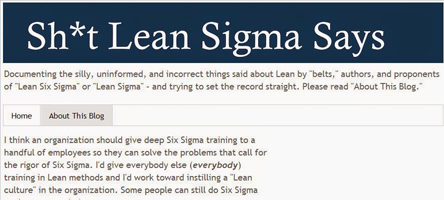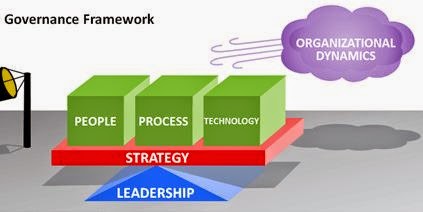This post is in response to the latest View from the Q blog on Strategy.
I don’t have anything to add to the formation of a strategy, as Bill Troy addressed this subject concisely and effectively. Instead I will place focus on the next step, namely to follow through and execute upon the defined strategy.
I am reminded of a quote by the noted German military leader and strategist, Helmuth Von Moltke.
“No battle plan survives first contact with the enemy”
This reminds us of the importance not only of crafting a suitable strategy, but managing its execution in such a way that the overall purpose of that strategy can be fulfilled, even in changing circumstances.
Consider the recent release by Apple of its iPhone 6 from the context of its competitors Nokia and Blackberry (Research In Motion).
 While, there is no doubt that all three organizations had a strategy, the presence and eventual predominance of Apple had a devastating effect on both Nokia and Blackberry.
While, there is no doubt that all three organizations had a strategy, the presence and eventual predominance of Apple had a devastating effect on both Nokia and Blackberry.


Even if the technology solutions are equivalent between the companies, the marketing and promotional advantages of Apple have transcended technology to instill a memorable and indelible impression in popular culture. For example, the involvement and engagement of the band U2 has drawn considerable interest and traffic to Apple in a way that neither Nokia nor Blackberry could have imagined.
 So what is needed to ensure that our strategies survive contact with the enemy, which in the context of a business strategy would be a competitor?
So what is needed to ensure that our strategies survive contact with the enemy, which in the context of a business strategy would be a competitor?
I propose three key practices: Mission, Mobilization, and Governance.
MISSION
Having a clear mission which defines the vision of success is essential to have all of the participants overcome their petty differences and jointly embrace and pursue the common good. The greater the mission, the more compelling the dedication and devotion will be to the fulfillment and achievement of that mission. For this reason, it is essential that the mission and vision align with the values of the organization and its people.
 In the absence of clear and unifying mission and vision objectives, the Quality profession tends to fall into a destructive pattern which I refer to as Quality “Indig” Nation. Rather than focus on the tasks at hand, the participants will devolve into these damaging archetypes which can impair and undermine the overall strategy.
In the absence of clear and unifying mission and vision objectives, the Quality profession tends to fall into a destructive pattern which I refer to as Quality “Indig” Nation. Rather than focus on the tasks at hand, the participants will devolve into these damaging archetypes which can impair and undermine the overall strategy.
Cynics: The quest for defects and faults will exceed into farcical proportions so that the Quality function will be a voice of negativity and defeat. While everyone else within the organization is pursuing the objectives, the Quality function takes upon itself the role of contrarian, repeated expressing why “it will never work”.
Purists: The dogmatic natures of certain “believers” will oppose any adaptation or modification if it is deemed “apocryphal” and violates the Canon of the “Holy Saints” Deming, Toyota, ISO standards, or whatever technical reference is deemed scripture. Spirited and emotional debates can consume valuable time and energy without accomplishing or fulfilling the strategy objectives.
 Tribalists: The Quality profession does not have a homogeneous background, but has evolved through the combined efforts of different types of practitioners with their particular expertise. However when one of these groups loses sight of the greater good and mutual respect, and seeks to dominate at the expense of the others, it is like the person with the hammer who sees all problems as a nail. Rather than addressing the overall problems, the emphasis is on promoting a particular concept or set of practices, and opposing balance and diversity of the solution.
Tribalists: The Quality profession does not have a homogeneous background, but has evolved through the combined efforts of different types of practitioners with their particular expertise. However when one of these groups loses sight of the greater good and mutual respect, and seeks to dominate at the expense of the others, it is like the person with the hammer who sees all problems as a nail. Rather than addressing the overall problems, the emphasis is on promoting a particular concept or set of practices, and opposing balance and diversity of the solution.
Blockers: There are those who have invested so much of their time an energy into a particular management system that they are resistant to change, lest a newly introduced dynamic threaten the sanctity and continuity. The resistance to change will inhibit progress, innovation, and prevent organizations from making the necessary adjustments and adaptations.
Esoterics: Often the work of Quality practitioners is accompanied by unusual terms and trends. Engineers and project managers often adopt the nomenclature of spiritual pursuits or martial arts. For example, one does not have to be a Sensei, a Black Belt, nor a Guru in order to track late deliveries using a control chart.
From a Quality perspective, the object is not to flaunt your knowledge and expertise, but simply to use the best mix of techniques and methods to fulfill the mission in a way that supports the greater good of the organization. As a profession, we must overcome our negative archetypes to serve and lead in the effective execution of our defined strategies.
MOBILIZATION
In order for the strategy to be effectively deployed, the necessary capital, materials, and resources should first be identified, procured, acquired, or obtained. One cannot assume that everything will be available on demand for the duration, and often a business case is needed to justify why this strategy requires the priority allocation of goods and services.
An improper mobilization could actually be more harmful in the execution of the strategy, as interrupted or incomplete work will be viewed negatively as a failure of the overall strategy. Nothing succeeds like success, so mobilization is important to ensure a continuous set of progressive victories.
 Symphony of Work: This approach requires that all participants are aware of their particular part in the overall effort. In this context, the timing is as important as the overall fulfillment, as there are many interdependencies.
Symphony of Work: This approach requires that all participants are aware of their particular part in the overall effort. In this context, the timing is as important as the overall fulfillment, as there are many interdependencies.
Coordinated Advancement: The advancement must be coordinated to ensure that all components are able to make the necessary gains. In some cases, this requires adjustments which are not favorable to the high performing units, who must divert from original objectives to support their peers for the greater good. A military example of this was found when Gen. George Patton, having led the 3rd Army through France, was summoned to redirect his army north in order to assist with the Battle of the Bulge.
Constraints Management: This practice, as referenced in Goldratt’s reference, The Goal, advises that progress and pace are determined by the constraint or bottleneck within the system. By managing the bottlenecks or critical project paths, the overall speed will improve.
Effective mobilization will help the strategy survive contact by ensuring adequate materials and resources, and coordinating the logistics and constraints to overcome interruptions and improve progress.
GOVERNANCE
Governance is essential not only to strategy but also to Quality. Without Governance, the lack of transparency and visibility of actual results and accomplishments will lead to future estimates being based on inaccurate assumptions.
 Accountability: In any venture, it is important to have a work breakdown structure which clearly reveals the parties responsible and accountable for fulfillment of that strategy. From this structure and framework, the interdependencies are revealed and can be managed. With accountability, expectations can be refined so that future estimates will be more accurate.
Accountability: In any venture, it is important to have a work breakdown structure which clearly reveals the parties responsible and accountable for fulfillment of that strategy. From this structure and framework, the interdependencies are revealed and can be managed. With accountability, expectations can be refined so that future estimates will be more accurate.
Action: When the Governance function reports that the strategy may be compromised, the execution steps must change. The organization should determine whether this requires an adjustment in resources, or a particular mitigation or contingency step. Once the actions have been identified, they must be effectively mobilized and rapidly deployed.
Adaptation: It may be necessary to shift strategies within the overall environment. This may be done in response to both negative risks and positive breakthroughs. For example, Pfizer had developed Sildenafil as a treatment for hypertension and angina. However after clinical trials revealed a particular side effect, Pfizer marketed this drug as Viagra, which became a highly profitable medication to combat erectile dysfunction.
 Acceleration: If the strategy is being successfully deployed, the the next step is to accelerate the implementation to increase the scope, scale, and impact of the strategy.
Acceleration: If the strategy is being successfully deployed, the the next step is to accelerate the implementation to increase the scope, scale, and impact of the strategy.
By following a strategy with a compelling Mission, adept Mobilization, and responsive Governance, the rate of successful fulfillment will be substantially improved.



